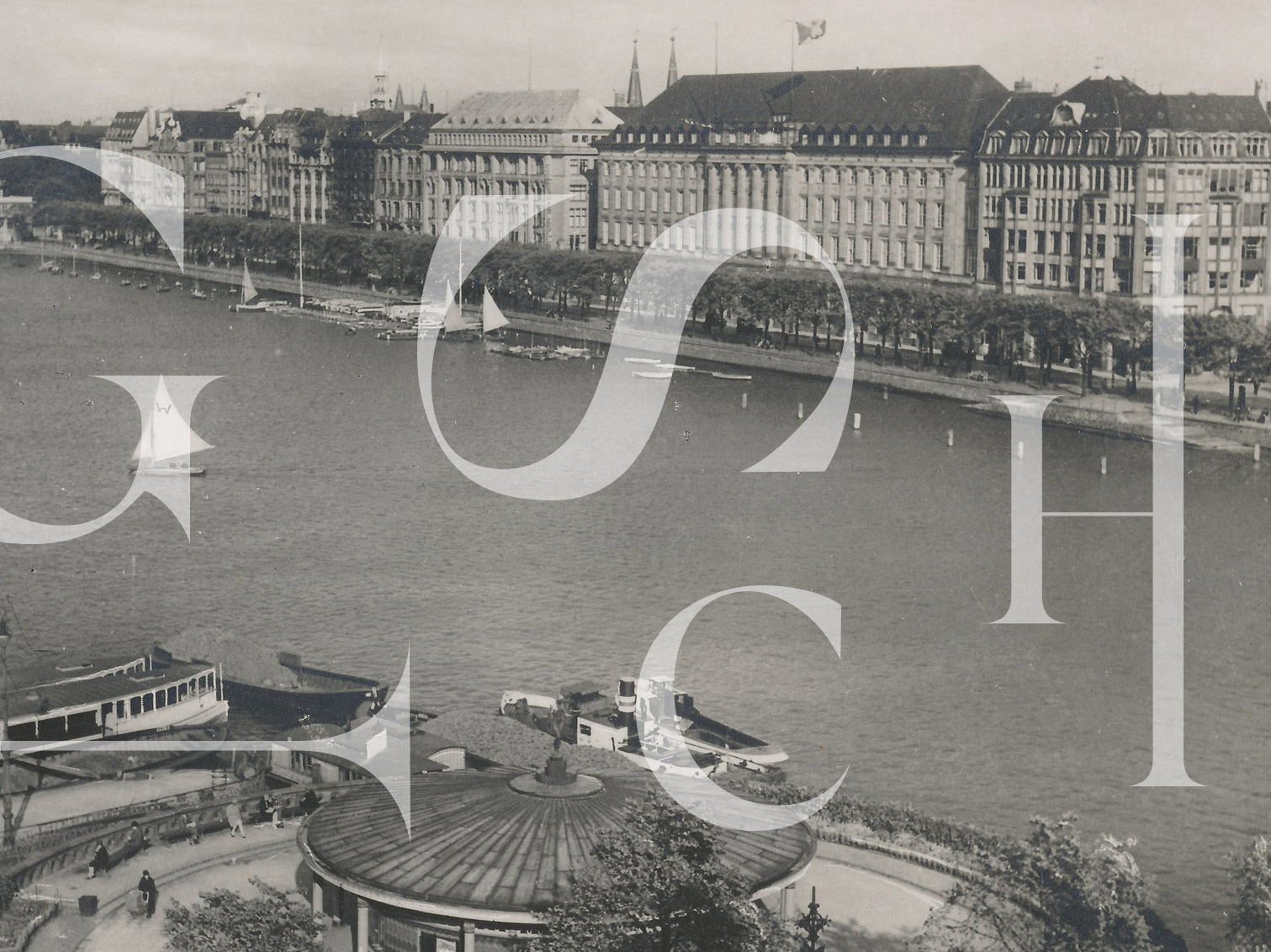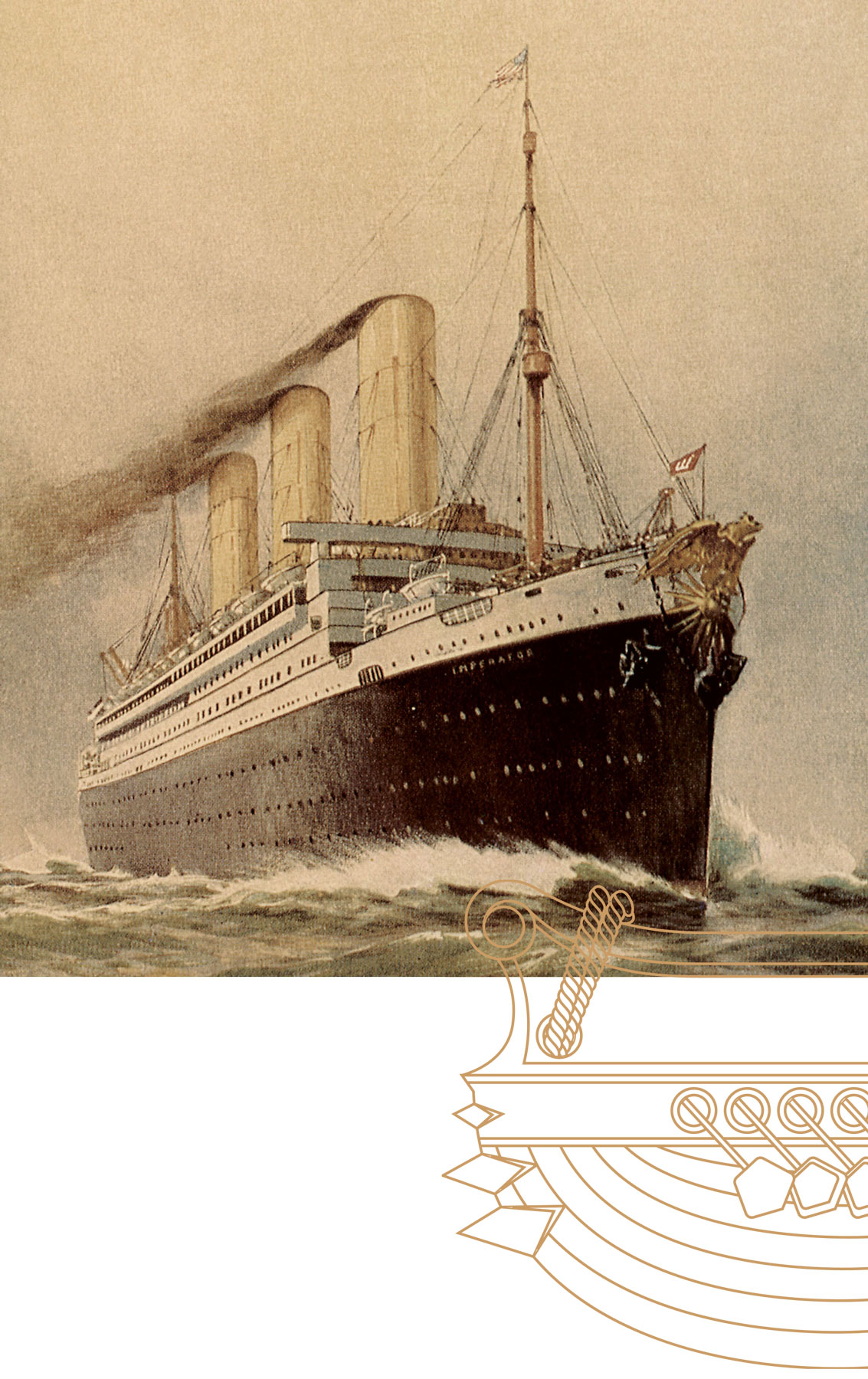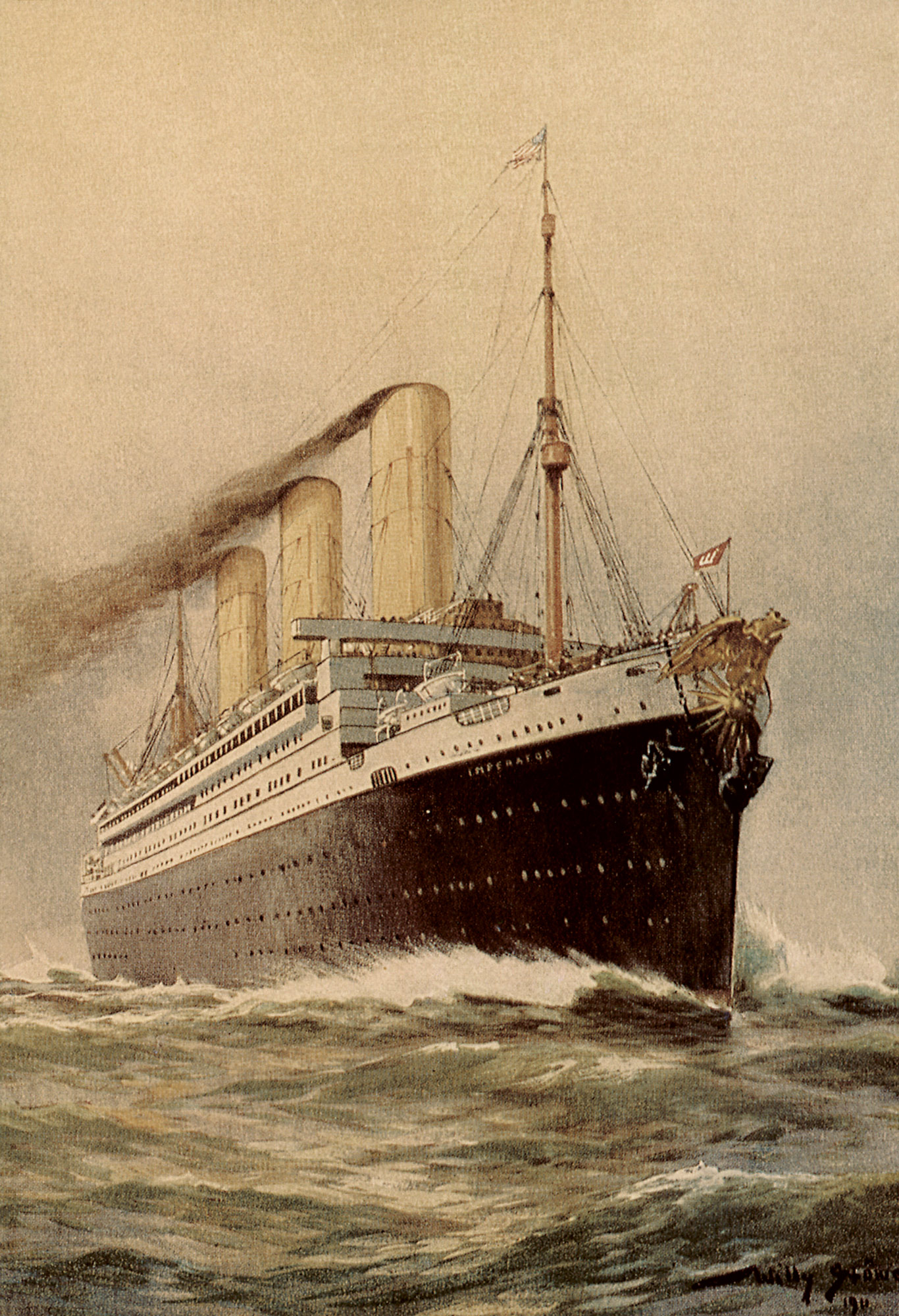





The office boulevard of Hamburg’s merchants
The Ballindamm owes its foundations to two disasters and its name to a seafaring visionary. Nowadays, the promenade on lake Alster is turning into an increasingly attractive and creative part of Hamburg’s city centre – for businesses and visitors alike.
Today’s Ballindamm is one of the most prestigious and central streets in the heart of Hamburg: the bridge between the exclusive shopping mile Jungfernstieg, the Europa Passage shopping arcade, and Glockengießerwall, where the art gallery and the main train station are located.
It is hence all the more astonishing, that this elegant promenade with its magnificent office palaces along the Inner Alster was built on rubble: In olden days, this is where the water of the Alster flowed along the city walls, flanked by a prison with an impressive gabled façade. Until the Great fire of Hamburg in 1842, which left behind nothing but rubble. Rubble that served as the foundation for the first street on the eastern bank of the Alster – named “Alsterdamm” by the people of Hamburg. A charming boulevard, which Hamburg’s merchants discovered for themselves around 1900 in order to establish their office buildings here.
The original façade of the Ballinhof seen from the former Alsterdamm – today’s Ballindamm. The Neo-Gothic building was designed by Lundt & Kallmorgen back in1905.
The years following the turn of the century also saw the construction of today’s Ballinhof (1901-1902) and the Hapag-Lloyd headquarters with the prominent sandstone façade – two buildings which, with a few exceptions, survived the destruction of the Second World War almost unscathed. After the Second World War, the Alsterdamm was widened – once again with rubble – and named after Hapag Director General Albert Ballin in 1947.

The office boulevard of Hamburg’s merchants
The Ballindamm owes its foundations to two disasters and its name to a seafaring visionary. Nowadays, the promenade on lake Alster is turning into an increasingly attractive and creative part of Hamburg’s city centre – for businesses and visitors alike.
Today’s Ballindamm is one of the most prestigious and central streets in the heart of Hamburg: the bridge between the exclusive shopping mile Jungfernstieg, the Europa Passage shopping arcade, and Glockengießerwall, where the art gallery and the main train station are located.
It is hence all the more astonishing, that this elegant promenade with its magnificent office palaces along the Inner Alster was built on rubble: In olden days, this is where the water of the Alster flowed along the city walls, flanked by a prison with an impressive gabled façade. Until the Great fire of Hamburg in 1842, which left behind nothing but rubble. Rubble that served as the foundation for the first street on the eastern bank of the Alster – named “Alsterdamm” by the people of Hamburg. A charming boulevard, which Hamburg’s merchants discovered for themselves around 1900 in order to establish their office buildings here.

The original façade of the Ballinhof seen from the former Alsterdamm – today’s Ballindamm. The Neo-Gothic building was designed by Lundt & Kallmorgen back in 1905.
The years following the turn of the century also saw the construction of today’s Ballinhof (1901-1902) and the Hapag-Lloyd headquarters with the prominent sandstone façade – two buildings which, with a few exceptions, survived the destruction of the Second World War almost unscathed. After the Second World War, the Alsterdamm was widened – once again with rubble – and named after Hapag Director General Albert Ballin in 1947.
A prominent office building embedded in a shipping tradition
The sandstone façade of the Ballinhof features a group of figures that is still intact today and a sculpture of a ship’s stern – a living witness to the eventful history of the house.
It was the family of ship owners A.C. de Freitas who commissioned the office building that was designed by the renowned architects Lundt & Kallmorgen from 1901 to 1902. Augusto Constantino de Freitas came to the Hanseatic city as a political emigrant and established a flourishing shipping company in a matter of years. Even back then, the building was to serve prestigious ambitions: with reliefs, friezes, capitals, and the flanking towers.
Two further building sections were completed in 1905 and 1921: In 1905, the architects enlarged the building on the side of Gertrudenstraße. In 1918, it was sold to the company Westfälische Kohlen-Kontor GmbH. In 1921, the architect Richard Kuöhl designed the recessed penthouse for the new owner, embellishing it with an impressive group of figures that measure four metres in height and represent “mining, trade, and industry”. The sculptures at the corner of Ballindamm/ Gertrudenstraße are a direct reference to the contractor and represent miners.
It is a miracle and a stroke of luck that the Ballinhof was not destroyed during the Second World War. Its marvellous features, including the ceramic façade with its Gothic-style elements on Ferdinandstraße (see picture on the left), have been preserved. They form a beautiful contrast to the front façade, which was made of sandstone.
Further historical elements have been preserved: the sculpture of the stern of a ship, which appears to be sailing into the building, as well as the railing of the staircase, which depicts scenes from the mining trade. It is no coincidence that the Ballinhof is under heritage protection and that it features on the list of Hamburg’s historic office buildings that are worth a visit.
A prominent office building embedded in a shipping tradition
The sandstone façade of the Ballinhof features a group of figures that is still intact today and a sculpture of a ship’s stern – a living witness to the eventful history of the house.

It was the family of ship owners A.C. de Freitas who commissioned the office building that was designed by the renowned architects Lundt & Kallmorgen from 1901 to 1902. Augusto Constantino de Freitas came to the Hanseatic city as a political emigrant and established a flourishing shipping company in a matter of years. Even back then, the building was to serve prestigious ambitions: with reliefs, friezes, capitals, and the flanking towers.
Two further building sections were completed in 1905 and 1921: In 1905, the architects enlarged the building on the side of Gertrudenstraße. In 1918, it was sold to the company Westfälische Kohlen-Kontor GmbH. In 1921, the architect Richard Kuöhl designed the recessed penthouse for the new owner, embellishing it with an impressive group of figures that measure four metres in height and represent “mining, trade, and industry”. The sculptures at the corner of Ballindamm/ Gertrudenstraße are a direct reference to the contractor and represent miners.

The sculptured façade of the Ballinhof with its tracery-like ornaments and reliefs reflects Romanesque, Byzantine, and Gothic architecture. The group of figures representing “mining, trade, and industry” at the corner of Ballindamm/Gertrudenstraße and the association with the shipping company below the bay window on the side facing Ballindamm are particularly impressive.
It is a miracle and a stroke of luck that the Ballinhof was not destroyed during the Second World War. Its marvellous features, including the ceramic façade with its Gothic-style elements on Ferdinandstraße (see picture on the left), have been preserved. They form a beautiful contrast to the front façade, which was made of sandstone.
Further historical elements have been preserved: the sculpture of the stern of a ship, which appears to be sailing into the building, as well as the railing of the staircase, which depicts scenes from the mining trade. It is no coincidence that the Ballinhof is under heritage protection and that it features on the list of Hamburg’s historic office buildings that are worth a visit.

The sculptured façade of the Ballinhof with its tracery-like ornaments and reliefs reflects Romanesque, Byzantine, and Gothic architecture. The group of figures representing “mining, trade, and industry” at the corner of Ballindamm/Gertrudenstraße and the association with the shipping company below the bay window on the side facing Ballindamm are particularly impressive.

